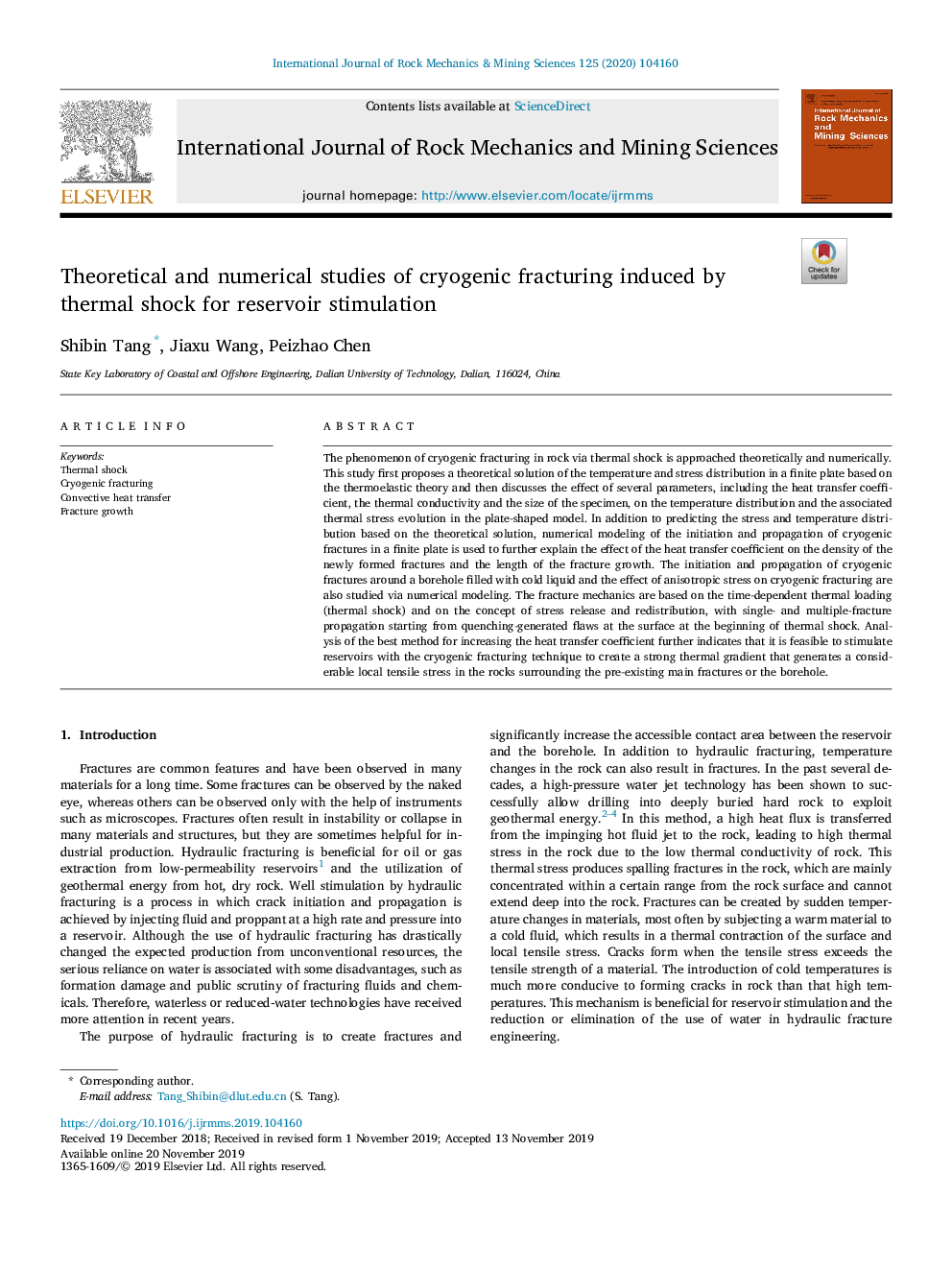| Article ID | Journal | Published Year | Pages | File Type |
|---|---|---|---|---|
| 13452914 | International Journal of Rock Mechanics and Mining Sciences | 2020 | 15 Pages |
Abstract
The phenomenon of cryogenic fracturing in rock via thermal shock is approached theoretically and numerically. This study first proposes a theoretical solution of the temperature and stress distribution in a finite plate based on the thermoelastic theory and then discusses the effect of several parameters, including the heat transfer coefficient, the thermal conductivity and the size of the specimen, on the temperature distribution and the associated thermal stress evolution in the plate-shaped model. In addition to predicting the stress and temperature distribution based on the theoretical solution, numerical modeling of the initiation and propagation of cryogenic fractures in a finite plate is used to further explain the effect of the heat transfer coefficient on the density of the newly formed fractures and the length of the fracture growth. The initiation and propagation of cryogenic fractures around a borehole filled with cold liquid and the effect of anisotropic stress on cryogenic fracturing are also studied via numerical modeling. The fracture mechanics are based on the time-dependent thermal loading (thermal shock) and on the concept of stress release and redistribution, with single- and multiple-fracture propagation starting from quenching-generated flaws at the surface at the beginning of thermal shock. Analysis of the best method for increasing the heat transfer coefficient further indicates that it is feasible to stimulate reservoirs with the cryogenic fracturing technique to create a strong thermal gradient that generates a considerable local tensile stress in the rocks surrounding the pre-existing main fractures or the borehole.
Related Topics
Physical Sciences and Engineering
Earth and Planetary Sciences
Geotechnical Engineering and Engineering Geology
Authors
Shibin Tang, Jiaxu Wang, Peizhao Chen,
